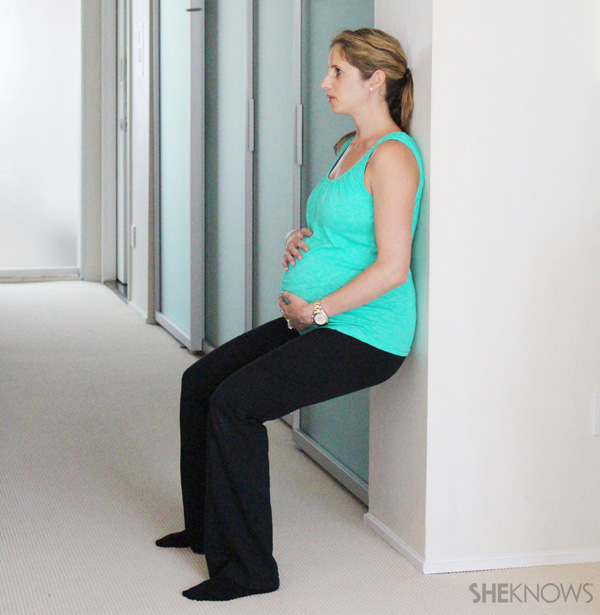Although prenatal yoga and stretching is great and important for women who are pregnant, but so are strong muscles! Labor and delivery is THE toughest and biggest marathon a woman's body will ever go through, and will be pushed beyond its limits. This marathon requires some muscular strength and endurance!
This is true for both vaginal deliveries and c-section deliveries. Having a strong lower body will help a mother recovering from a c-section by allowing her to use her strong legs for simple things like getting up and down, using the restroom, and walking around. With stronger legs, the abdominals can relax and recover more efficiently.
Try doing these 5 exercises for the rest of your pregnancy and you will definitely notice a difference in your labor, delivery, and postpartum recovery!
1. Squats
Squats, lunges, and wall sits encourage the baby to face backward in the birth canal, which helps avoid "sunnyside up" babies who are facing foward, which increases painful back labor. They also increase leg and glute strength which is helpful during labor and pushing. If your glutes are strengthened, that also means your pelvic floor is strengthened and the lower back is more naturally aligned.
Feet a little wider than hip width apart, and instead of arms out, I would say hands on hips. Pull the belly button in and lower your body to just above a 90 degree angle in the knees.
Do 3 sets of 10 repetitions.
2. Lunges
Notice how big of a forward step you need to take. Keeping you feet hip width apart, take a big step forward with a chair next to you giving you support and balance. Keeping your weight in the heel of your front foot, dip the back knee straight down and then lift back up. Stay in this position, and lower and lift until you complete 10 repetitions. Then switch sides. Do 3 sets of 10 reps on each side.
3. Wall Sit
Wall sits can be done with or without an exercise ball. If you use an exercise ball, you will find that it gives a little back massage and makes it easier to get in and out of the squat. Choose what you like best and stick with it.
Keep feet hip width apart and knees in line with hips as you lower down to a 90 degree angle in your hips and knees. Keep your weight in your heels and toes relaxed. Sit here for up to 2 minutes. This is also a great time to do belly breathing, giving you a chance to focus on your breathing and pushing through the squat discomfort, similar to a contraction.
Feel free to do up to 3 wall sits and holding it there for 30 seconds to 2 minutes.
4. Seated Pelvic Tilts
Pelvic tilts help decrease back pain and it also helps get the baby to be head down in the birthing position. They are also helpful during labor as they help women breathe through contractions.
Sitting on a ball, chair, or couch and with correct posture, pull your tailbone under and contract your abdominals, tilting your pelvis forward. Your glutes will automatically contract; however, try to make your abdominals do more of the work. Release and go back to your regular posture. Do 3 sets of 10 repetitions.
5. Plank
Plank is an exercise that utilizes the transverse and rectus abdominis muscles. This is a very efficient exercise and a very important one. Having strong transverse abdominals will help during the pushing stage of labor and will also help recovery from diastasis recti (the central splitting of the rectus abdominis).
Forearms and Toes
Forearms and Knees
For a more advanced plank, do it on your toes. But for beginners or for those who feel unstable on their toes, go on your knees. Just make sure elbows are directly under shoulders, hips are in line with your torso, and your abdominals are pulled in with your chest engaged.
Do 1-3 planks holding each for 30 seconds to up to 2 minutes.
Doing these 5 exercises 2-3 times per week will be extremely helpful during pregnancy, labor, delivery, and postpartum recovery. They will also help with any prenatal ailments (back pain, sciatic pain, leg pain, etc.).









No comments:
Post a Comment